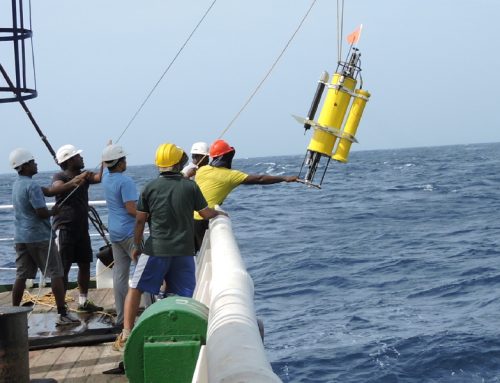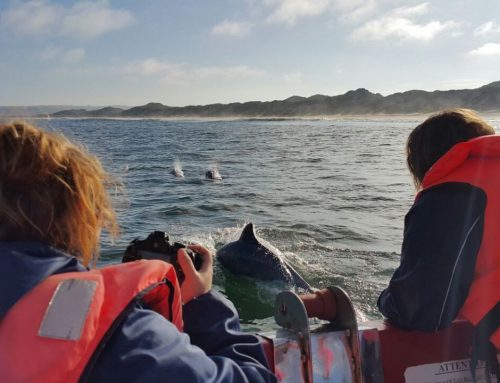 It’s relatively easy to measure how many tons of carbon are present in a tropical forest, using physical measurements and satellite photos. But how do you measure how much carbon is present in a wetland or in a million hectares of grassland soil? It’s not easy, says Onno Huyser, the WWF Senior Manager for Fynbos and Succulent Karoo. Which is why tropical forests are sought after in the global carbon market. But it’s not enough.
It’s relatively easy to measure how many tons of carbon are present in a tropical forest, using physical measurements and satellite photos. But how do you measure how much carbon is present in a wetland or in a million hectares of grassland soil? It’s not easy, says Onno Huyser, the WWF Senior Manager for Fynbos and Succulent Karoo. Which is why tropical forests are sought after in the global carbon market. But it’s not enough.
“We need to develop frameworks that can measure how much carbon you can sequester in a variety of local landscapes and ecosystems, such as when you rehabilitate and rehydrate a wetland,” Huyser explains.
A wetland in its natural state is a hydrated system where carbon is locked up in large amounts as a result of the ‘dead’ biomass (necromass) that accumulates there, which means it should score highly on below ground carbon. “Following on this, if you rehabilitate and rehydrate a degraded wetland – which has lost a lot of its below ground carbon due to oxidation (induced through bad land management practices) – you are effectively sequestering carbon. The challenge is to develop methodologies to measure and verify this carbon,” says Huyser.
The same applies to vegetation species, such as spekboom (Portulacaria afra) – South Africa’s wonder plant – which stores remarkably high amounts of carbon. “Spekboom is a biological oddity of note,” comments Huyser. “In some cases this plant is capturing and storing carbon at rates similar to those in sub-tropical forests elsewhere in Africa, such as those in northern Mozambique and Zimbabwe. And yet it grows in semi-arid areas of the Eastern Cape with less than a third of the rainfall.”
Rehabilitate degraded tracts of spekboom thicket by re-planting spekboom, and you sequester considerable amounts of carbon.
In both the wetland and spekboom case, the process simultaneously serves biodiversity and ecosystem conservation, with marked improvements in soil quality and water supply. Social benefits, both in terms of job creation to rehabilitate natural systems and in terms of the supply of good, clean water, are part of this co-benefit approach.
“These are the kind of niche or ‘boutique’ ecosystem carbon sequestration projects we are interested in developing as part of a new project the WWF Green Trust is financing for a three-year period,” says Huyser. The project is titled ‘Going To Market – Making Ecosystem Carbon work for Biodiversity & Water’ and will be supervised by Huyser.
At the outset it’s important to understand that ecosystem carbon is the carbon of life, it’s an incredible element that is found in every living organism on this planet – in plants, animals, soil, food, organic waste matter, air, the list is infinite. It’s also present in fossilised form in, for example, coal, hence the name fossil fuel. But burn that coal in a power station and you produce chemical carbon or carbon dioxide emissions in runaway quantities that are accelerating global warming.
At the same time we are rapidly destroying forests and natural landscapes, which remove CO2 from the atmosphere and maintain balance in the natural carbon cycle.
Accordingly, we need to accelerate the conservation and understanding of landscapes and vegetation species that absorb CO2 and store carbon in South Africa, which does not have tropical forests.
“Several initiatives are in place, the best known being the spekboom project in the Baviaanskloof, Eastern Cape, but most are still in the early phase of putting pilots projects in place, and developing basic research data,” says Huyser, explaining that massive investment is required to get carbon mitigation or offset projects to the point where they are ready to go to market.
“We are looking at things a bit differently,” continues Huyser. “Many carbon mitigation projects in the world today are wholeheartedly focused on sequestration outcomes for the compliance market and pay little heed to the broader environment or ancillary opportunities for biodiversity and water outcomes. Our project focuses on these and the social development aspects, while at the same time developing methodologies to measure and verify the carbon content in local carbon sources for the voluntary carbon market.”
As a developing country, South Africa does not have an official emissions cap and our emission reductions are voluntary, as is the case with most developing countries.
“Our long-term intention is to establish a portfolio of premium projects that carry significant co-benefits, and in this way attract finance for our fundamental natural resource management objectives within WWF,” says Huyser.
The benefit to business of investing in the boutique portfolio is the opportunity to get in at the beginning. “Given the global problem we face, we are going to see the carbon price double, triple or quadruple down the line. It’s inevitable,” Huyser states.
To set the process in motion, during the first year of the project it will:
- Undertake market research and assessment to determine likely investor interest in a range of south African ecosystem rehabilitation projects that will complement a “boutique” carbon market;
- Approach companies internationally and nationally – such as those participating in the Carbon Disclosure Project on the JSE.
- Develop the most appealing ecosystem rehabilitation projects in such a way that they unlock diverse funding streams that yield real, measured outcomes of carbon, biodiversity and water benefits, and position these projects for market.
- Develop organisational capacity within WWF that supports and guides the formation of a boutique market, and develop the capacity of an emerging Conservation Manager to engage in this cutting edge arena.
The Conservation Manager required will need to be either an ecologist or someone who has a strong grasp of environmental carbon and ecosystems, as well understand the market and business side. “It’s an exciting job specification and it requires a unique spread of skills. We’ve set a minimum level of a Masters degree,” says Huyser who will supervise the manager, together with a strong, independent reference group that will offer important technical input. “This will ensure we stay on track,” says Huyser, adding that because it is an altogether novel approach “we need to ensure we don’t head down any blind allies that would waste valuable time.”




